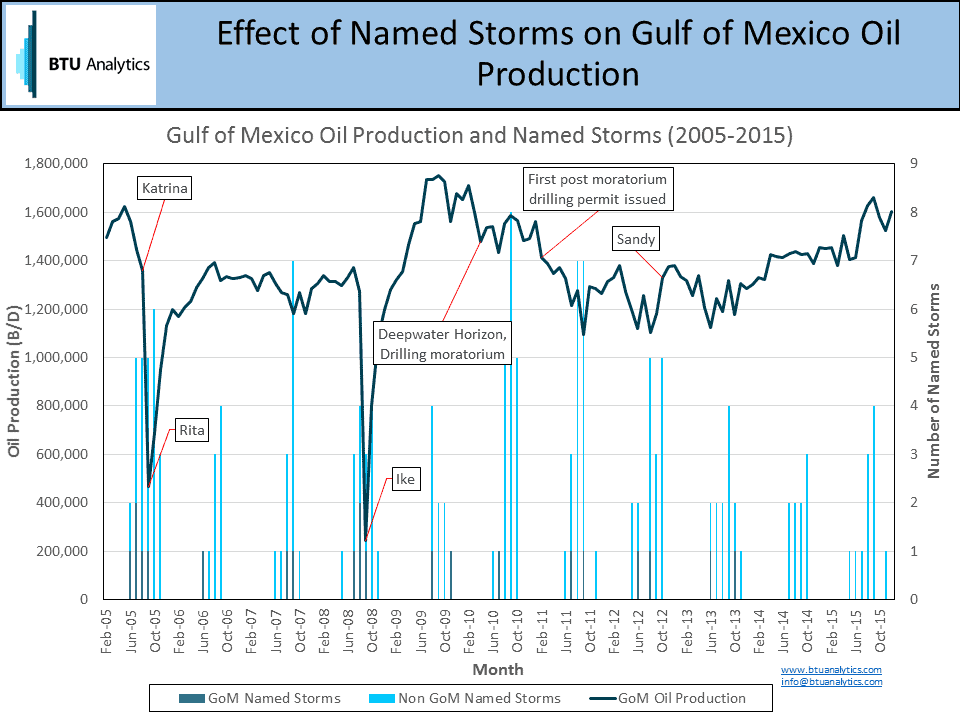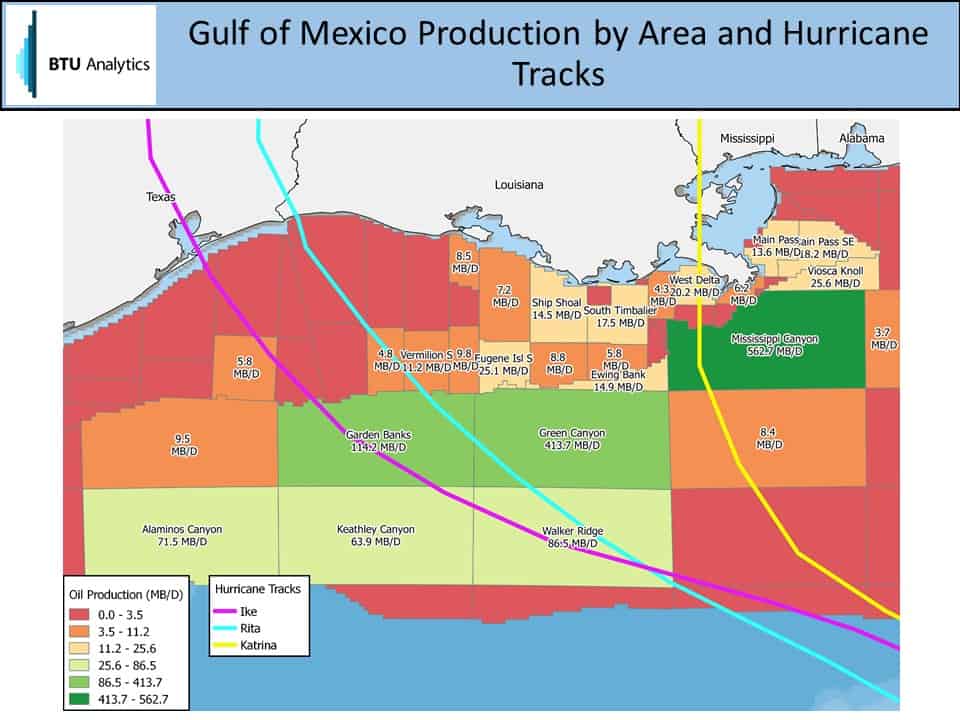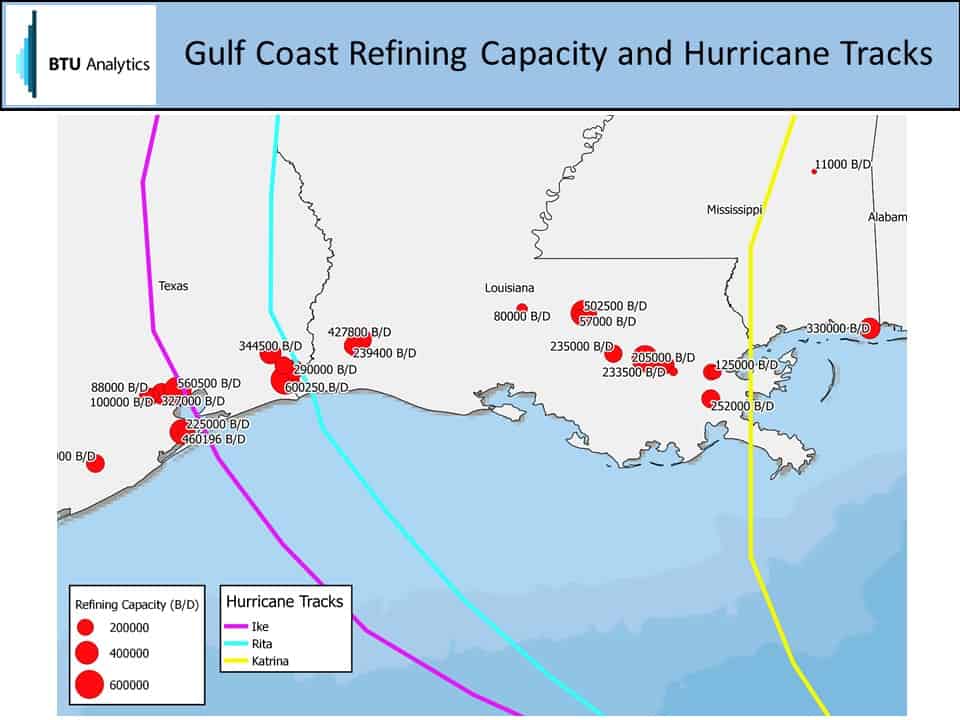This year’s Tropical Storm Colin was the first named storm in the Gulf of Mexico (GOM) since Tropical Storm Karen in 2013. A “major” storm (Category 3 hurricane or higher) hasn’t made landfall in the US since Wilma in 2005. Despite a recent lack of major storm landfalls, a named storm will eventually affect the Gulf again. What sort of impact can named storms be expected to have on oil and gas production in the region? And might that impact be enough to help rebalance markets?
Storms can disrupt GOM production in multiple ways: they can delay drilling of new wells, they can force the shut in of producing wells for fear of damage to production facilities, and they can damage or close onshore facilities that normally receive offshore production, leaving offshore volumes with nowhere to go. Understanding the magnitude and duration of any potential disruption to GOM production is of particular interest because the GOM is the only region in the United States which has seen continued oil production growth despite the recent price environment. The region is expected to produce 2.0 MMb/d by 2019 and peak at 2.2 MMb/d in 2022. The below chart shows GOM production between 2005 and 2015 as well as the number of named storms, categorized by whether or not they occurred in the GOM. Major events are also labeled.

On average, a named storm in the GOM resulted in month-on-month production losses of 169 Mb/d, or between 10%-12% of production. For the majority of storms, production recovered in the following month. However, in the case of storms that caused significant damage along the Gulf Coast – the notables being Katrina and Rita in 2005 and Ike in 2008 – the effect was significantly larger. Between Katrina and Rita, 893 Mb/d or 65% of production was shut in (Note that the individual effects are hard to tease out because they occurred within a few weeks of one another). Ike shut in 1,030 Mb/d or 80% of production. In both cases, production took more than three months to fully recover. If the effects of Katrina, Rita and Ike on oil production are treated as exceptions and excluded from consideration, named storms over the 2005 – 2015 time frame only decrease production in the month they occurred by 75 Mb/d, or between 4%-7% of production.
The map below shows the amount of production in each area of the GOM as well as the paths of Katrina, Rita, and Ike. The path of Ike in particular emphasizes that production volume intersected does not directly correlate with the production volume disrupted – this can result from both disruptions of onshore refining as well as from the preemptive shut in of production that lay within the storm’s forecast cone.

The magnitude of the impact that similar storms could have in the future might be better predicted by analyzing the refining capacity that could potentially be impacted at landfall. As seen in the next map, all three storms intersected significant refining capacities.

The 75 Mb/d of shut in production, recovered within a month, shut in by an “average” named storm would hardly make a dent in global production. More significant storms that make landfall around refining capacity (based on an admittedly small sample size) can shut in much larger volumes by closing refineries by disrupting sea-to-shore infrastructure that might otherwise take displaced volumes to storage. However, the significance of shut in GOM production has decreased as onshore shale oil production has boomed: in 2010, the GOM accounted for 29.0% of US production. Today, it accounts for only 18.4%. And as similar disruptions to production this summer have demonstrated, such impermanent problems are only enough to affect prices in the short run.








